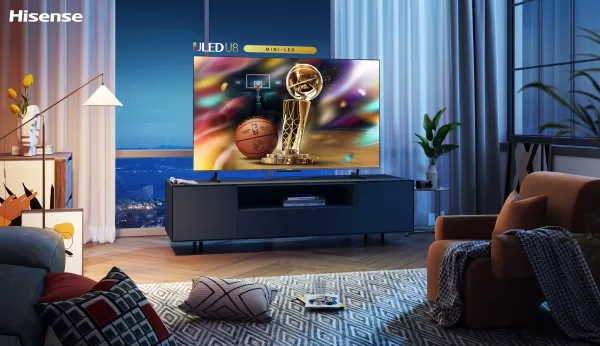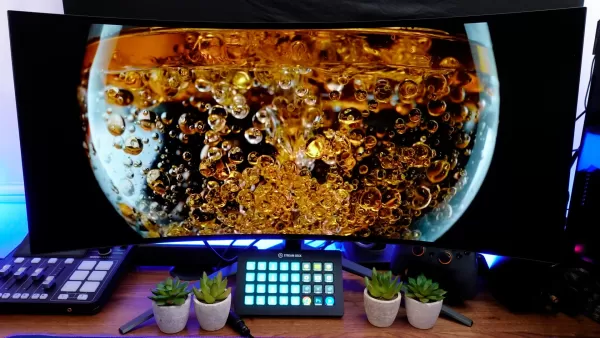I vividly remember purchasing my first OLED TV, the LG E8 55-inch, back in 2019, just before we all went into lockdown. It turned out to be the perfect companion during isolation. At the time, I didn't fully grasp the nuances of OLED (organic light-emitting diode) technology. I knew it utilized self-lit pixels, offering infinite contrast, unlike the backlit LCD displays. But it was after immersing myself in the visually stunning worlds of Final Fantasy XV and The Last of Us Part II that I truly appreciated the nostalgic, dream-like quality it brought to my gaming experience. Naturally, I didn't stop there.
A few years later, I upgraded to the LG C2 65-inch TV. Since then, I've reviewed numerous devices with OLED displays and discovered that not all OLEDs are created equal. In fact, the technology varies significantly. You might be curious about the different types of OLEDs. There are many, but the three most important are WOLED, QD-OLED, and AMOLED.
 WOLED, QD-OLED, and AMOLED: How They Work
WOLED, QD-OLED, and AMOLED: How They Work
OLED technology has been around for decades, with companies like Kodak and Mitsubishi exploring various iterations. It wasn't until LG introduced its OLED TVs in the early 2010s that the technology gained widespread popularity.
LG's version of OLED is known as WOLED (White OLED). While LG markets it simply as OLED, it's essential to understand that WOLED uses a pure white OLED layer with an RGBW color filter. This approach addresses the issue of different deterioration rates among red, green, and blue emitters, which can accelerate burn-in. However, this method introduces its own challenges, such as imbalanced brightness and reduced color volume. Higher-end WOLED models attempt to mitigate these issues with Micro Lens Array technology, which focuses light through thousands of microlenses on a single pixel.
In 2022, Samsung introduced QD-OLED (Quantum Dot OLED), which replaces the white OLED layer with a blue one, paired with a layer of quantum dot color converters. Unlike the RGBW filter, quantum dots absorb light, converting blue into red or green without losing brightness, resulting in more vibrant colors.
AMOLED, on the other hand, falls into its own category. It's similar to WOLED but includes a thin-film transistor (TFT) layer that allows for faster pixel activation. However, this comes at the cost of OLED's iconic "infinite" contrast.
 WOLED, QD-OLED, and AMOLED: Which Is Better for Gaming?
WOLED, QD-OLED, and AMOLED: Which Is Better for Gaming?
Choosing the right OLED technology for gaming depends on your specific needs and preferences. If you're looking for a straightforward answer, QD-OLED is generally considered the best option. However, there are scenarios where WOLED or AMOLED might be more suitable.
AMOLED displays are commonly found in smartphones and laptops, rarely in TVs due to their higher cost. AMOLED's flexibility makes it ideal for various screen sizes and offers high refresh rates and excellent viewing angles. However, they struggle in direct sunlight due to lower peak brightness.
For gaming monitors and TVs, you typically choose between WOLED (marketed as OLED) and QD-OLED. WOLED can achieve high brightness, but this is limited to whites due to the RGBW filter's impact on color brightness. QD-OLED, on the other hand, offers overall brighter visuals and bolder colors thanks to its quantum dot technology.
In my setup, my WOLED TV in the living room handles glare well, maintaining deep blacks even against bright windows. Conversely, my QD-OLED monitor on my desk shows a purplish tint in similar conditions because Samsung removed the polarizing layer to boost brightness, increasing reflections.
While QD-OLED generally provides superior color and brightness, WOLED is less distracting in highly reflective environments. Remember, though, that display quality ultimately depends on specific model specs and your budget—the more you invest, the better the visual experience.
However, WOLED and QD-OLED might not be our only options for long.
The Future of OLED Is PHOLED
There are several types of OLED, including PHOLED (Phosphorescent OLED), which uses phosphorescent materials to convert energy into light. The challenge with PHOLED has been the significantly shorter lifespan of its blue component compared to green and red, making early PHOLED panels impractical.
Recently, LG announced a breakthrough in blue PHOLED technology, paving the way for mass production. LG dubs PHOLED as "Dream OLED" due to its 100% luminous efficiency, far surpassing the 25% efficiency of fluorescent technology. This means PHOLED TVs will be brighter and more energy-efficient.
While we won't see PHOLED in TVs anytime soon, we can expect to see this technology in smartphones and tablets in the near future.






